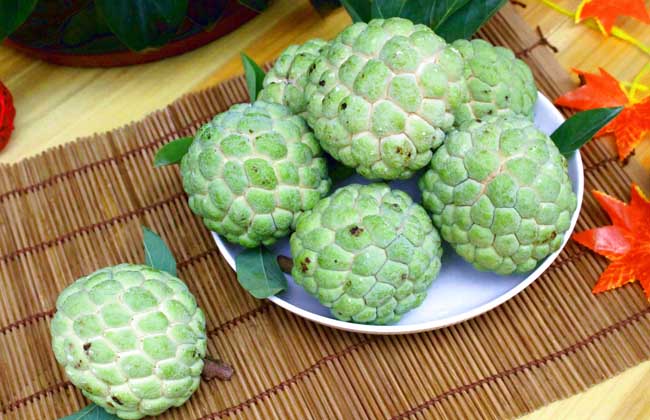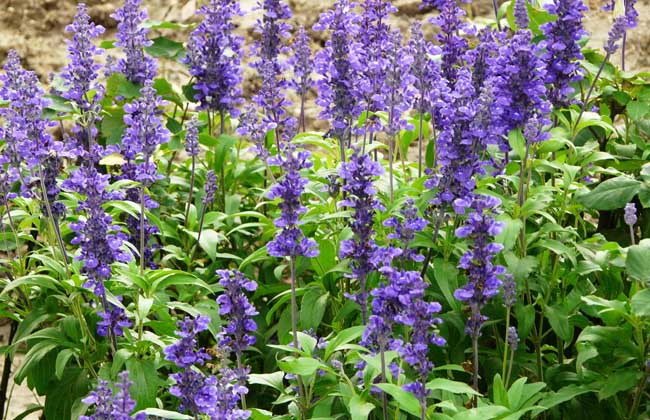How much is the price of Sakya fruit?

The famous Annona fruit of Sakyamuni is named because its shape is similar to the head of a Buddha statue with a molluscum bulge with a polygonal little finger. It is mainly produced in Taiwan Province of China, and is also grown in Fujian, Guangdong, Guangxi and Hainan. It is produced every autumn to the beginning of the next spring and is of high edible value. Let's take a look at how much Sakyamuni fruit costs.
How much is the price of Sakya fruit?
The price of Sakyamuni fruit varies according to origin and season, but it is generally between 20 yuan and 40 yuan. at present, the price on Taobao is 138 yuan per 5 jin, which is actually within the price of 20 yuan. The Sakya Festival is held every year in Taiwan, and the price of the selected champion Sakya is equivalent to RMB 10,000 yuan. at present, the price of Taiwan's Sakya shipped inland is about double that of Guangdong, Hainan and other real estate Sakyamuni.
The selection method of Sakyamuni fruit
1. The color of fresh Annona is generally not very bright. If the head of Annona is sharp, and the density of nails on the skin is relatively high, it shows that Annona is not mature enough, on the contrary, it is a mature Annona.
2. When choosing and buying, you should choose the large fruit, large scale and round fruit-shaped Annona. If you do not need to eat it immediately after you buy it, you should choose something slightly harder. If the protuberance of the epidermis is worn out, it is not a big problem to eat, because what you eat is its internal pulp. If you want to eat immediately, you can choose a small crack, softer, this is ripe lychee.
3. When selecting, you can squeeze it gently in your hand first. A good Annona should feel tight and elastic. If the cracks in the shell of Annona are flat and the sutures are obvious, the taste will be very sweet.
What are the benefits of Sakyamuni fruit?
1. Delaying skin aging: Sakyamuni fruit is rich in vitamin C and has the effect of lowering blood sugar. It is the best antioxidant fruit, which can effectively delay skin aging and whiten skin.
2. Intestinal defecation: the fiber content of Sakyamuni fruit is high, which can effectively promote intestinal peristalsis and remove the persistent stool accumulated in the intestine.
3. Lowering blood sugar: Sakyamuni fruit has the effect of activating brain cells and lowering blood sugar. It is often used in foreign countries to treat brain atrophy and diabetes. Patients with diabetes often take Sakya, which has an obvious supplementary dietotherapy effect on the relief of the disease.
4. Anti-cancer: since 1970, experts have conducted more than 20 studies on Sakyamuni fruit. The results show that the extract of Sakyamuni fruit can effectively fight malignant cells of 12 types of cancer, including colon cancer, breast cancer, prostate cancer, lung cancer and pancreatic cancer. At the same time, Sakyamoto has antifungal and antiparasite properties. In addition, it helps regulate blood pressure and is an antidepressant and broad-spectrum antibiotic.
5. Promote the growth and development of children: Sakyamoto fruit is a very balanced food, which is rich in sugars, proteins, amino acids, minerals, vitamins, flavonoids and crude fiber ammonia. Acid can promote the production and secretion of insulin and enhance the immune function of cells. Lysine is an amino acid for the regeneration of brain nerve cells. Arginine can stimulate the pituitary gland to secrete growth hormone, promote the synthesis of collagen tissue and promote the growth of children.
6. Maintain neuromuscular stress: Sakyamoto fruit contains a variety of mineral elements, the contents of potassium, sodium, calcium, magnesium, iron and zinc are very high, and potassium, sodium, calcium and magnesium maintain a certain proportion, which can promote muscle contraction and maintain neuromuscular stress.
Note: Sakya must be ripe and soft to eat. After buying it home, if it is still stiff, you can wrap it with a newspaper, spray some water and leave it for one or two days. After it becomes soft, you can cut it open and peel it with a knife. It is delicious and sweet, and the taste is very unique. It can also be cut into pieces to make all kinds of ice drinks. The pericarp is inedible. If the pericarp is black, don't worry, it tastes better.
Related
- A course of planting techniques and methods on how to grow carrots
- How to plant the latest tulips?
- Is it better to pick tea in the morning or in the afternoon? When is the best time for tea to be picked? what is the third or fifth tea?
- Launch Yuanxiao Happy combination Haocha + Tea Yuan healthy Taste
- Penghu Tourism "Fireworks 20 Parade with You"
- 2022 West Lake Happiness holds "Digital Revitalization Voucher" and draws iphone13 and laptop.
- Banqiao Fuzhou social houses are designed to change start-up combined with police elimination to create a safe and livable environment
- The convenient measure of "mechanical weeding" in Xinbei has been abused and the Agriculture Bureau has imposed heavy penalties on the illegal land consolidation.
- Changgeng University Joins Hands with Four Memory Factories to Rescue Memory Talent Shortage
- The list of Taiwan's top 100 MVP managers is listed by the Director-General of the Farmers' Association of Sanxia District.



